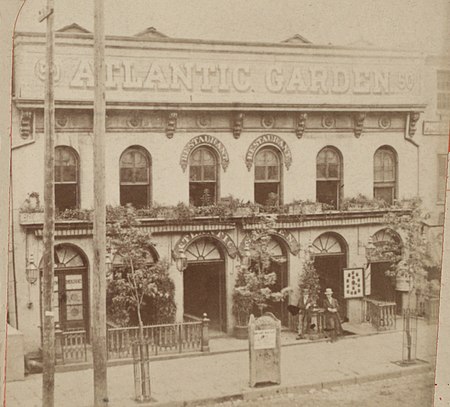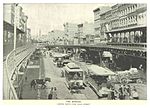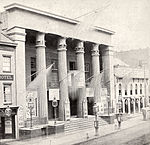Atlantic Garden

The Atlantic Garden was a beer garden and music hall established by William Kramer in 1858 at what is now 50, Bowery, New York City, next to the Bowery Theatre (built in 1826) and on the site of the Bull's Head Tavern, formerly headquarters for New York's cattle market, and the New York Hotel. The premises extended west to a secondary frontage on Elizabeth Street.The Bowery Theatre was built as a fashionable theater, but by the 1850s it came to cater to immigrant groups; the Germans especially patronized Atlantic Garden, which featured a theater behind the beer hall, where the new entertainment of "variety" acts were presented along with popular music concerts. In 1910, following the neighborhood's changing dynamic, Atlantic Garden switched to presenting Yiddish theatre.In 2013 structures on the site were razed to make way for a high-rise hotel.
Excerpt from the Wikipedia article Atlantic Garden (License: CC BY-SA 3.0, Authors, Images).Atlantic Garden
Bowery, New York Manhattan
Geographical coordinates (GPS) Address Phone number Website Nearby Places Show on map
Geographical coordinates (GPS)
| Latitude | Longitude |
|---|---|
| N 40.71586 ° | E -73.99644 ° |
Address
Hotel 50 Bowery
Bowery 50
10013 New York, Manhattan
New York, United States
Open on Google Maps




